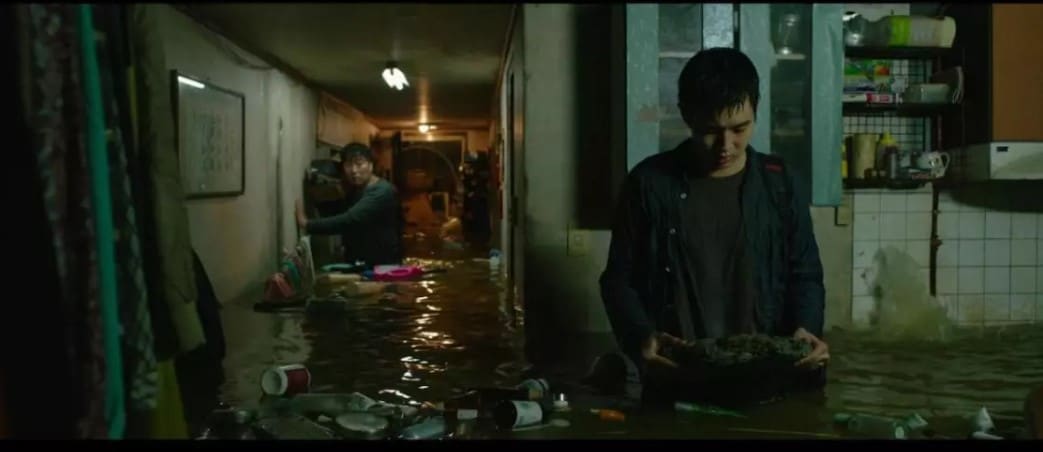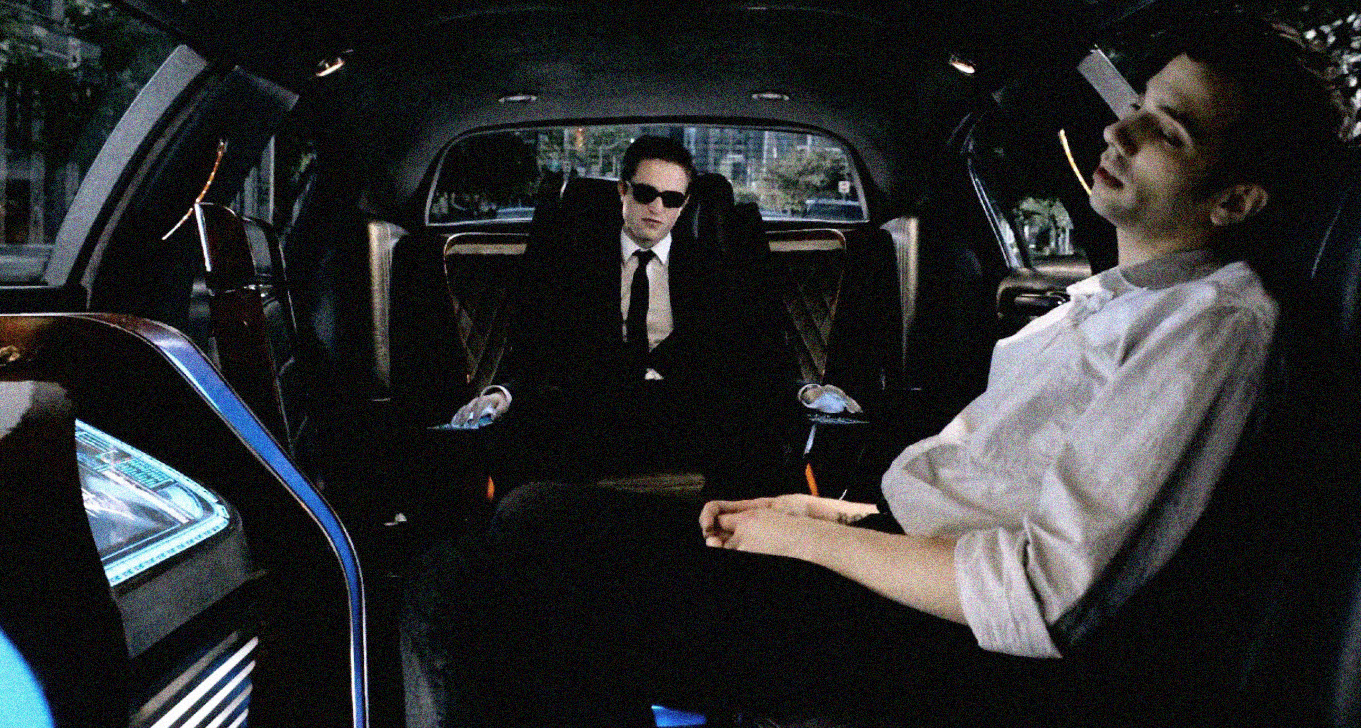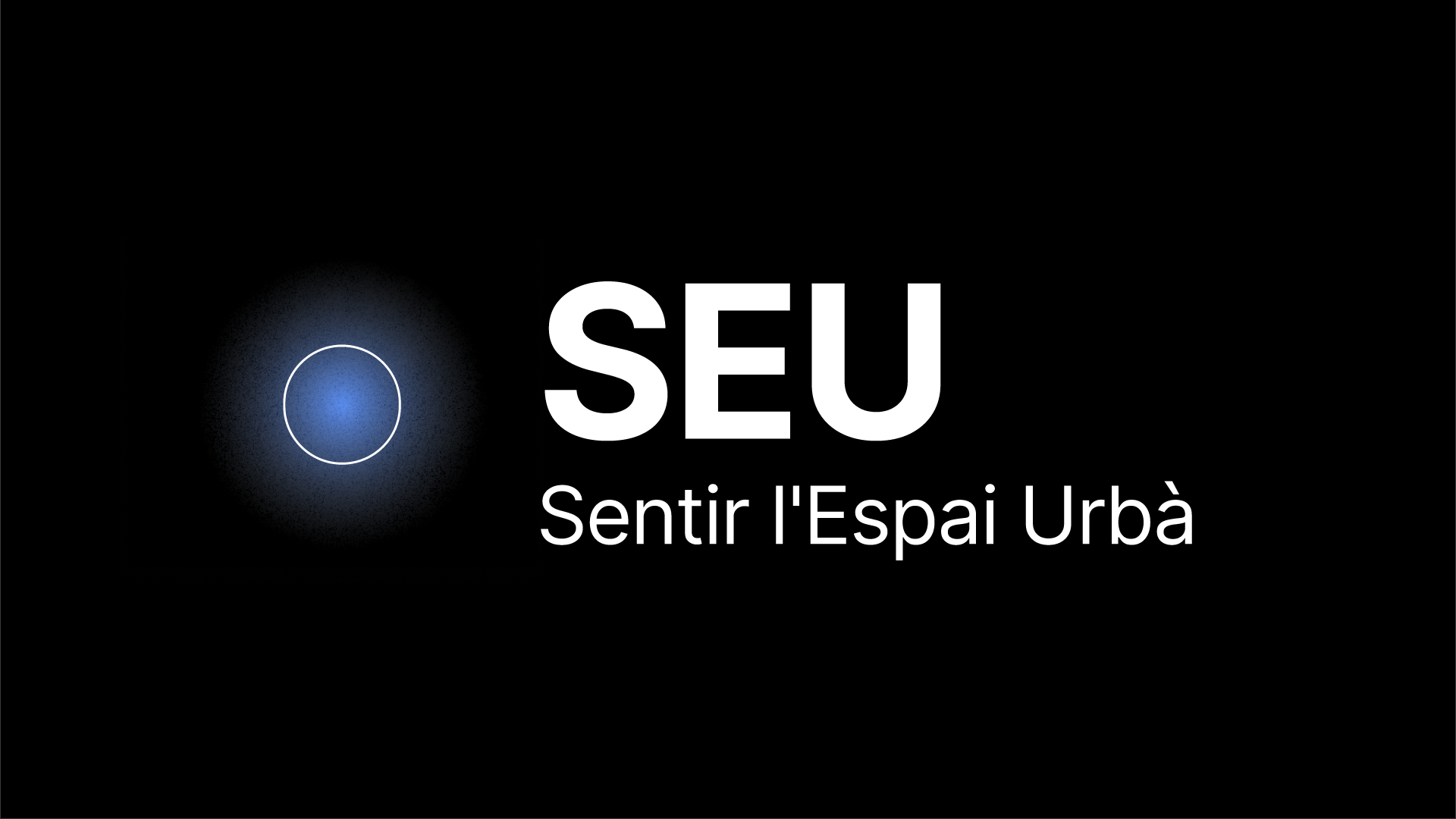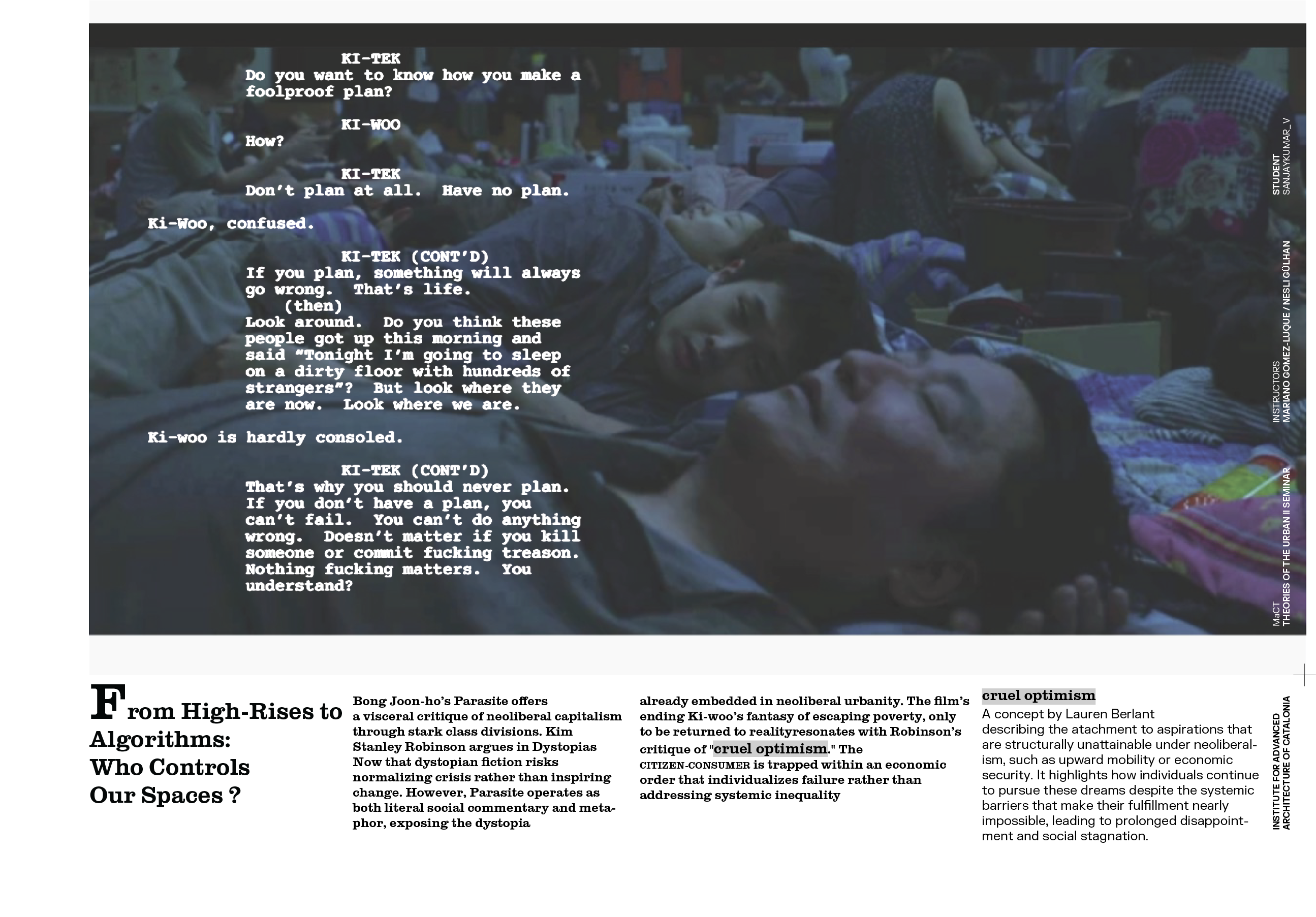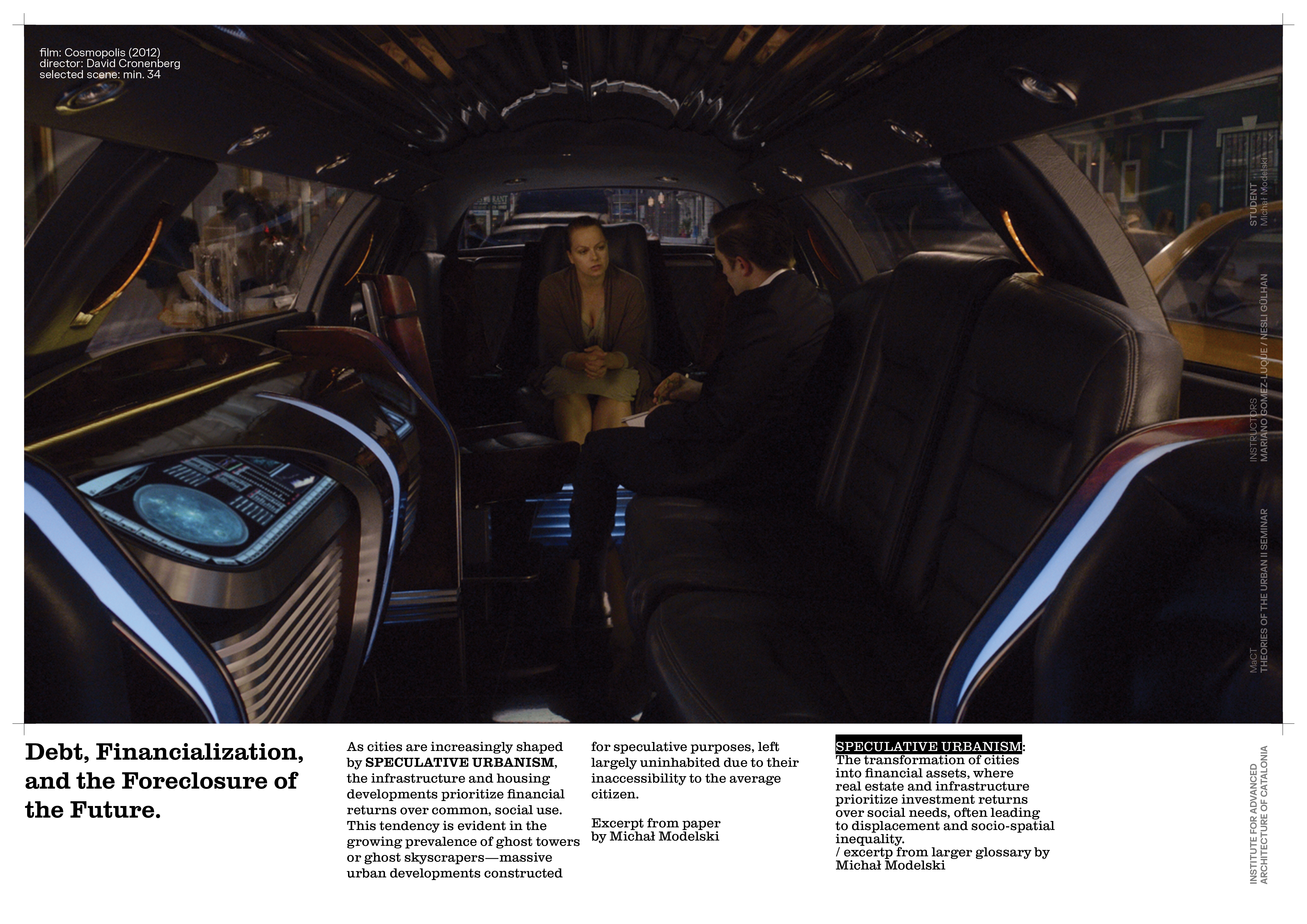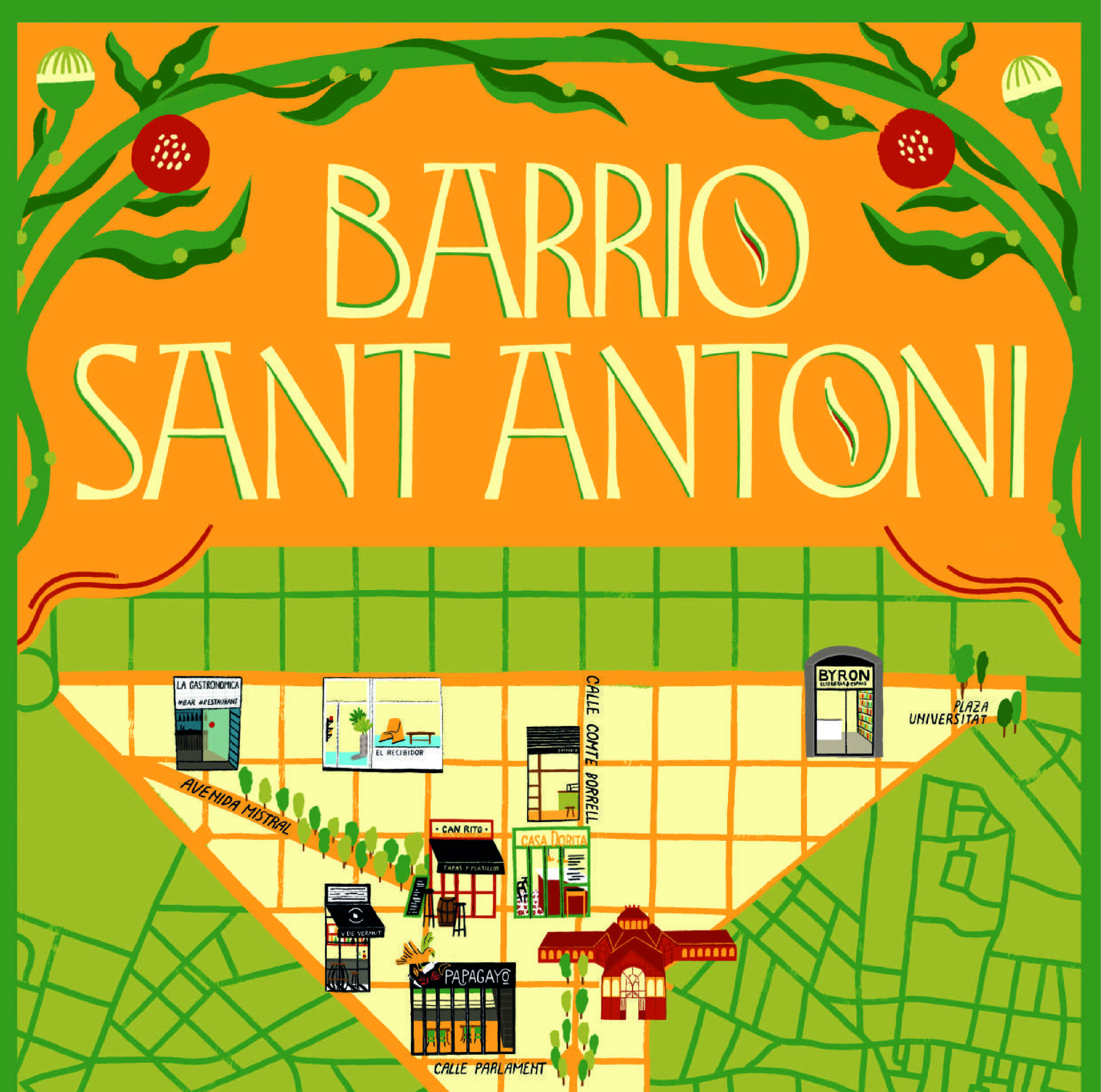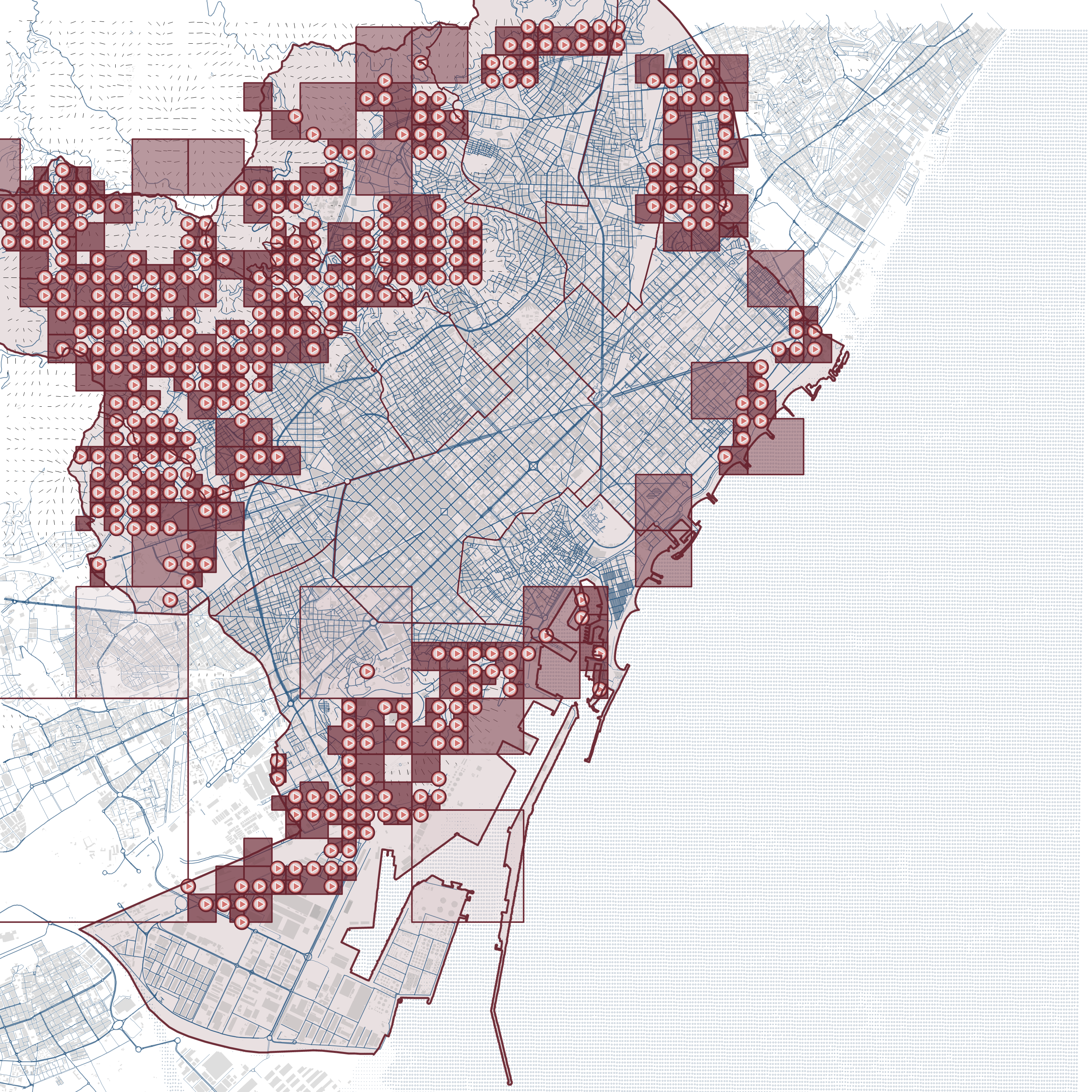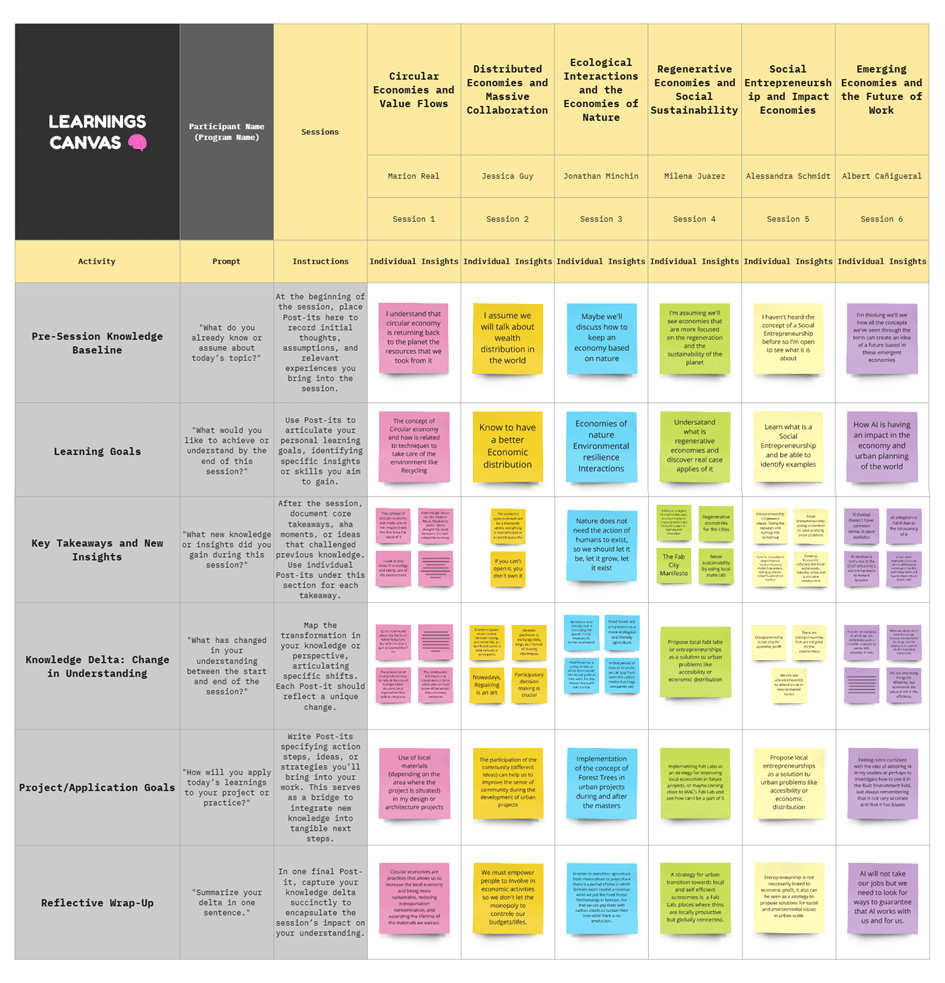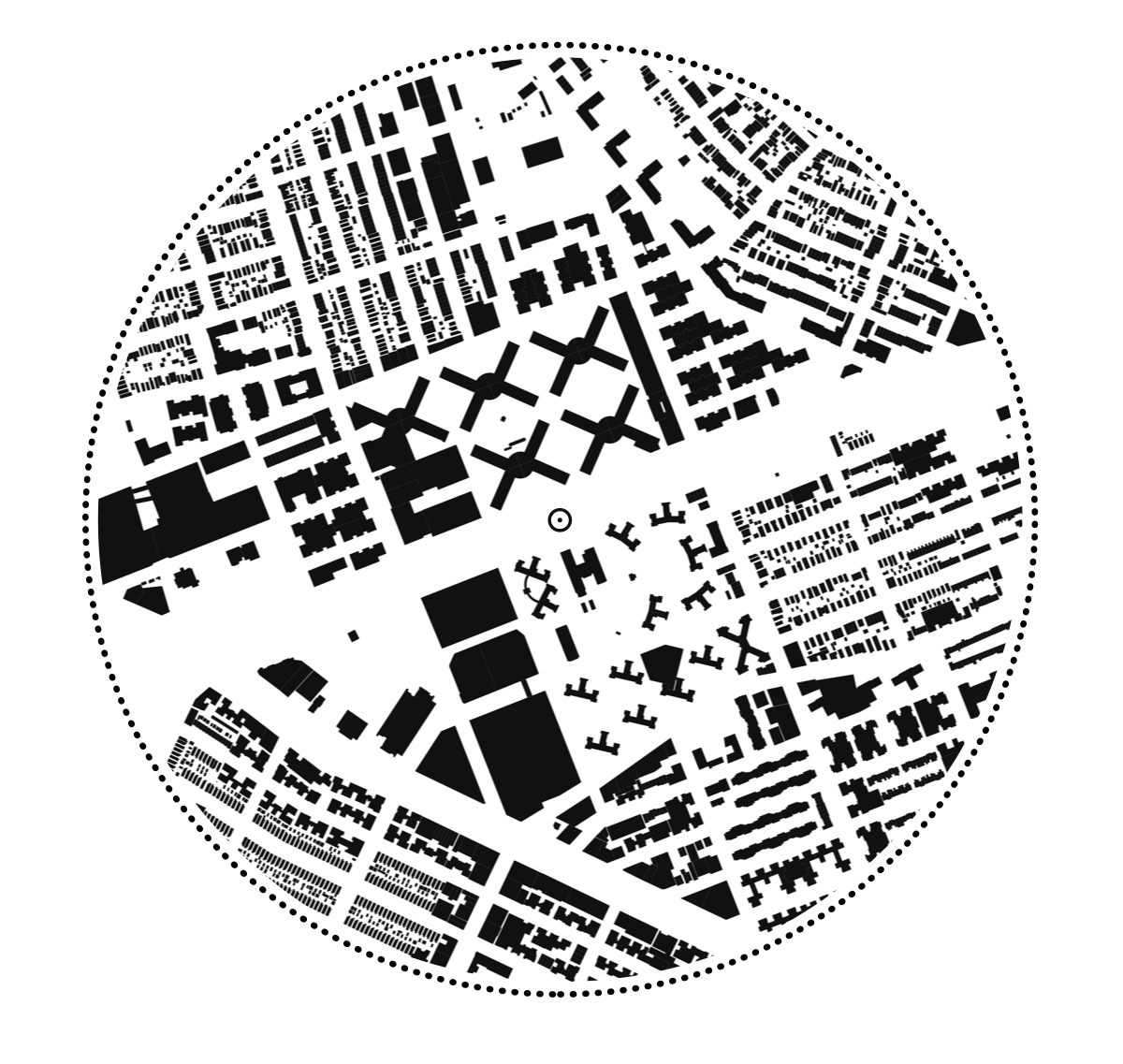The Master in City & Technology’s academic structure is based on IAAC’s innovative, learn-by-doing and design-through-research methodology which focuses on the development of interdisciplinary skills. During the Master in City & Technology students will have the opportunity to be part of a highly international group, including faculty members, researchers, and lecturers, in which they are encouraged to develop collective decision-making processes and materialize their project ideas.
THE SKYLINE OF THE CAPITAL
Architecture as a means of social segregation “capital materializes, to a large extent, through urban construction, the establishment of social relations in the city, the organization of space in the city, among others” (Harvey 2020, 23) According to Charles Jencks, the death of the modern architecture dated on July 15, 1972 at 3:32 p.m, when … Read more
BarnaBin – A City Cleaning App
Walking through Ciutat Vella, the heart of Barcelona, one can’t help but notice the overflowing bins, the persistent smell of garbage, and the discarded trash left along the streets. Despite the city’s continuous efforts to keep public spaces clean, waste management remains a pressing issue, particularly in the historic district where narrow streets and high … Read more
SEU
Sentir l’Espai Urbà Cities communicate with us through different ways: sound, image, smells, textures, materials, weather, among others. But how do we perceive all these layers? How do we feel about it? What role does urban design play in this exchange? How do we feel the city? Every day, we are immersed in urban surroundings … Read more
CLEAN UP THE NOISY CITY!
Through this workshop, we developed “Clean up the Noisy City,” an educational and interactive game designed to raise children’s awareness of urban soundscapes. In this engaging experience, players take on the role of city problem-solvers, working together to identify, assess, and mitigate disruptive noises using creative solutions. The game is played through a structured yet … Read more
Sant Antoni Passport
Urban spaces are not just places to live and work—they are playgrounds for social interaction, historical storytelling, and cultural engagement. As part of the IAAC’s Serious Games Seminar, our team explored Sant Antoni, Barcelona, to design playful interventions that connect the community to its past, present, and future. Our approach combined game design with urban … Read more
consans
This term, we have been focusing on understanding and designing public spaces in the Sants neighborhood of Barcelona. Sants has a unique identity shaped by its long-standing tradition of neighborhood cooperation and pride in its working-class roots, but has faced civic disengagement in recent years. In the studio, our objective has been to leverage public … Read more
TIME³
Multidimensionality of Time for Inclusive Urban Lives This project explores urban inclusivity through the multidimensional lens of time, using Barcelona as a case study. The analysis considers three temporal dimensions: time of day, time of year, and time of life, recognizing how these factors shape access to essential urban amenities. Proximity serves as the first … Read more
Introduction to Emerging Economies
Over the course of 6 weeks we had the opportunity to be introduced to emerging economies, a concept that from my initial perspective was outside of urban design, but as the classes progressed, I realized its relevance to urban planning and to the current world in general. CIRCULAR ECONOMIES AND VALUE FLOWS The circular economy … Read more
ILLA DE RAVAL
This project focuses on establishing a community-centered public space in Santa Coloma. Situated at Block Illa de Raval, a designated “green finger” of the Pinta Verde initiative, the project seeks to improve accessibility, enhance social engagement, and address infrastructural needs based on local context and community input. HUMAN Research and analysis The research highlighted several … Read more
THE PLANETARY GUIDEBOOK: (IN)COMPLETE URBANIZATION NARRATIVE
“ Critical theory is thus not intended to serve as a formula for any particular course of social change; it is not a strategic map for social change; and it is not a ‘how to’-style guidebook for social movements.”Neil Brenner (2009) What is critical urban theory? THE STATEMENT …settlement – rural/urban – city – megalopolis … Read more
Urban Complexity: Rethinking Space & Knowledge
01 Reading as Urban InsightIn a rapidly urbanizing world, the ability to read critically across diverse mediums—both digital and print—serves as an indispensable tool for interpreting the complexities of urban theory. Techniques like HYPERREADING, which facilitates navigation through vast digital information, and CLOSE READING, which emphasizes deep textual analysis, are crucial for decoding the nuanced … Read more
Designed Realities
“The artificial refers not to the fake, but to what is deliberately created, designed with purpose, and capable of reshaping both human and planetary futures.” Benjamin Bratton In recent years, the notion of artificiality has evolved from being seen as an imitation of the natural, to an integral part of planetary and urban systems. Benjamin … Read more

